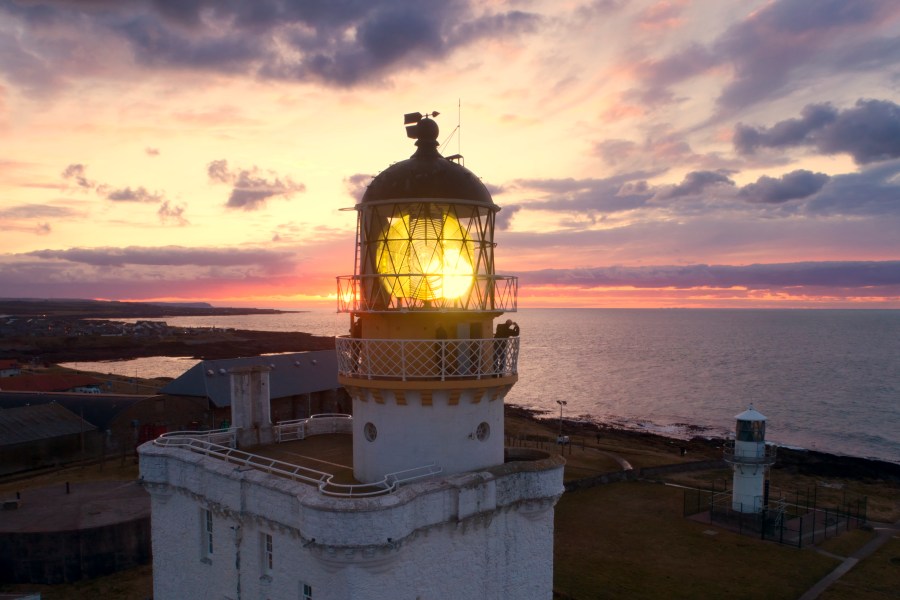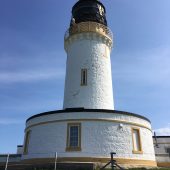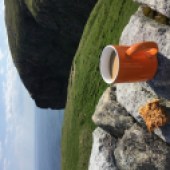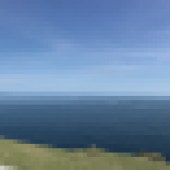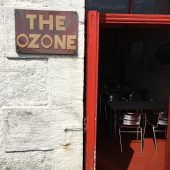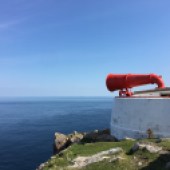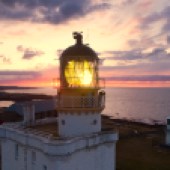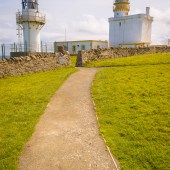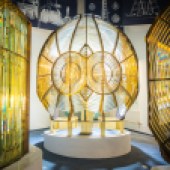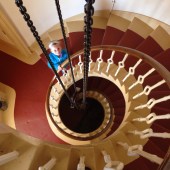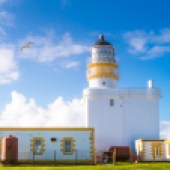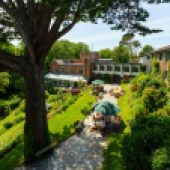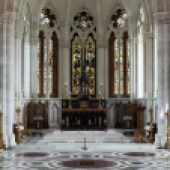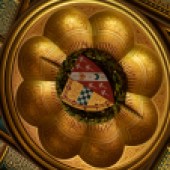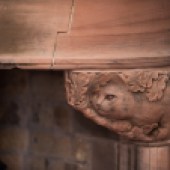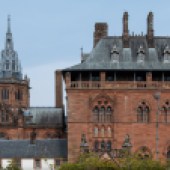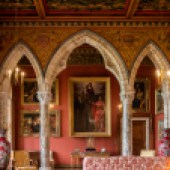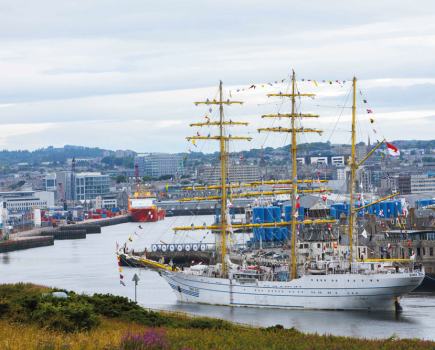Simon Baldwin takes a tour of some lesser known Scottish gems which he says are worthy of further exploration.
It is more than 20 years since US Defence Secretary, Donald Rumsfeld, delivered what became his most famous speech: “We also know there are known unknowns; that is to say we know there are some things we do not know.”
Mention Scotland’s coast and many will know…bits! The famous Firths of Forth and Clyde. Skye. The Tay Bridge. Sea Lochs. West Sands beach in St Andrews used in the opening sequence of the movie Chariots of Fire. But Scotland’s coast extends to more than 7,000 miles. When you think the land border with England is less than 100 miles, there are a lot of, well, unknowns!
I suspect there are some square feet of Scotland’s highlands that have not been stepped on in, well, perhaps ever, so vast is the countryside. But the coastline is different. The country’s growth through the centuries relied on seafarers.
Here, I take a journey to discover what many in Scotland might describe as ‘weel kent’…well known to those who live here, known unknowns to those who do not.
The Museum of Scottish Lighthouses in Fraserburgh
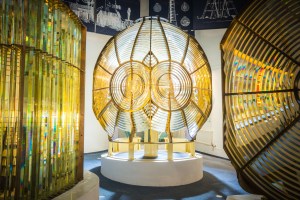
Explore the historical wonders of Fraserburgh Lighthouse. Credit: The Museum of Scottish Lighthouses
In 1787, Kinnaird Head Castle was converted to become the first mainland lighthouse in Scotland but it was not up to the job. In the early 19th century, Robert Stevenson was tasked with fixing the problem. He engineered a foundation, walls and a spiral staircase right through the heart of the castle. In 1902, Robert’s grandson, David Alan Stevenson, installed a hyper-radial lens, flashing a bright white light every 15 seconds, making it visible to grateful seamen up to 25 nautical miles off shore. It remains in perfect working order.
It is an extraordinary property and well worth a visit. Complete with an adjacent Wine Tower, today’s lighthouse is one of the best-preserved buildings on what is known locally as the “nine castles of the knuckle” – ancient fortifications dotted along Aberdeenshire’s Buchan coast which punches out into the North Sea.
Visitors can see the lighthouse as well as many original features of the castle including the old kitchens and elements of the grand hall. The museum is both an independent charitable trust and a limited company – “dedicated to preserving the industrial and social history of Scottish Lighthouses.” The small team who run it do a grand job.
Museum manager Lynda McGuigan explains: “You get a real sense of a lighthouse keeper’s life – from seeing our wonderfully preserved quarters to appreciating just how hard life must have been in this windswept but beautiful corner of Scotland.”
Lynda says that visitors are encouraged to “get involved” whether getting into character by donning the keeper’s uniform or climbing the spiral staircase to the lighthouse’s open platform.
She adds: “The museum houses the largest lens collection in the UK along with a host of information about the engineers and keepers behind them, not least of all the famous Stevenson Family who were responsible for building not only this gem but another 92 lighthouses in 150 years.”
- The Museum of Scottish Lighthouses – lighthousemuseum.org.uk
- Private hire including for weddings – lighthousemuseum.org.uk/hire-lighthouse-museum/
- Discover Fraserburgh – morroccomedia.com/discoverfraserburgh
Cape Wrath
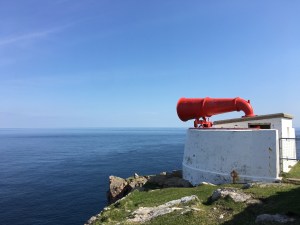
Annually, up to 6,000 visitors make the trip to Cape Wrath. Credit: Simon Baldwin
The cliffs on which these stand are a little older – around a billion years – and form one of Britain’s most extraordinary landscapes, part of the North West Highlands Geopark with UNESCO status. It is here that the north and west coasts of Scotland meet.
Look north from atop mainland Britain’s highest sea cliffs and there’s no land between you and the Arctic. It is easy to understand that ‘wrath’ is derived from the old Norse for ‘turning point’ – this is where the Vikings turned for home.
And it was once a home – small, crofting communities eking out a living as shepherds until the school closed just after the Second World War. The sheep remain, as do the shielings – shepherds’ shelters – and the military’s connections continue over 23 square miles where NATO hold combined land, air and sea training manoeuvres.
Others who choose to make their home at Cape Wrath? Tens of thousands of breeding birds – puffins, razor bills, fulmars, kittiwakes, and guillemots – nesting on the cliffs. And one family. John Ure converted buildings to make a home and business, The Ozone Cafe. Claimed to be Britain’s most remote cafe, it is open 24 hours a day, 365 days of the year, and provides toilets, a selection of hot and cold snacks plus gifts and souvenirs.
Annually, up to 6,000 visitors make the trip to Cape Wrath, some in walking boots trekking one of two long distance trails: the 200-mile-long Cape Wrath Trail and The Scottish National Trail – at 470 miles, the longest in Scotland.
If you are not a hiker, how do you get here? I asked local lobster fisherman and crofter, James Mather, whose family runs Visit Cape Wrath. Born and bred in nearby Durness, James says: “We’re a small family-run business, passionate about our Scottish heritage, local history and nature and we pride ourselves on being able to share this knowledge with visitors.”
It is James’ cousin, Stuart Ross, who operates and drives the Cape Wrath minibuses. James adds: “There’s a small passenger ferry that takes around ten minutes to cross the Kyle of Durness. Our buses meet you and then it takes us about an hour to drive the 11-mile track to Cape Wrath.”
It is a bumpy road, but the buses don’t go above 15 mph, the knowledgeable drivers giving a commentary along the way. And when you get to Cape Wrath, you’ll have around 90 minutes to soak up this astonishing coastal landscape. The return bus takes you back to the pier. You should allow 3½ hours for the whole trip.
- Cape Wrath Mini Bus – visitcapewrath.com/
- The Ozone Cafe – 01971 511314
Mount Stuart on the Isle of Bute
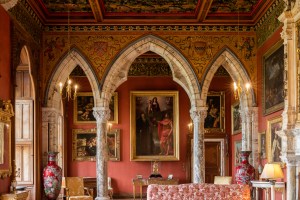
You will see furnishings, artwork and books, some of which date from the 1400s. Credit: Mount Stuart House
Steeped in history, including its unique geology straddling the Scottish Highlands and Lowlands, folk have lived on Bute since around 2000BC. The Stuart family – descendants including Robert the Bruce – have held a hereditary title here since the 12th century.
For the benefit of this visit, we’re focused on much more recent history and, in particular, on one incredible building: Mount Stuart House – home to the Crichton Stuart, the Marquesses of Bute.
The 2nd Marquess risked his family’s fortunes on a hunch that would reap the most extraordinary returns. He was the founder of modern Cardiff and invested heavily in developing South Wales’ coal and iron industries. Dying at the age of 54, his fortune passed to his six-month-old son – the 3rd Marquess, aka John Crichton-Stuart.
Not only did he inherit and continue to grow a vast fortune, but John set about accumulating knowledge at a similar rate. He was fascinated by and studied architecture, astrology, art, languages, mythology and religion, all driven by his love of travel – and he was a prolific writer.
Shortly before Christmas in 1877, fire severely damaged the family home and the then 30-year-old John – by now reportedly the world’s richest man – set about rebuilding. As the tour guide tells you on your visit, you have to understand that there were never any financial constraints in the design or building works – and it shows.
The original Georgian wings survived, and John Stuart and his team of architects, stonemasons, craftsmen and builders set about incorporating these into his neo-Gothic masterpiece. Described by many as “eccentric”, the house is an extraordinary architectural showcase that took 21 years to complete.
Donna Chisholm, head of visitor operations, describes your arrival: “Step inside and you are in awe of the building’s design. The entrance hall is crafted from 20 different types of marble quarried to order from sites across Europe. The 80-feet high ceiling makes you look up to spy a map of the stars studded with glass crystals. Signs of the zodiac and their seasons illuminate stained-glass windows. It is captivating.”
Many of the original house’s content survived the fire, so you will see furnishings, artwork and books – some of which date from the 1400s. The Chapel is a work of art – its floor is typical of Medieval Italian architecture and the same style can be found in the Sistine Chapel and Westminster Abbey.
Donna adds: “There are innovations at every turn, quirky architectural gems through every door.” The world’s first domestic heated pool, their own telephone system – Alexander Graham Bell only demonstrated his telephone to Queen Victoria in 1878 – but Mount Stuart had their own. It was the first house in Scotland wired for electricity and completed with a central heating system that still works to this day.
A charitable trust now runs the property as well as managing and maintaining many more properties, farms and forestry across the Isle of Bute. Innovation remains at the heart of all they do – reinvesting in the house and across the estate and island, running learning events, art exhibitions and rural initiatives…all working to make Mount Stuart sustainable in the 21st century.
- Mount Stuart – mountstuart.com/
Looking for some inspiration for a trip to Scotland? Find your perfect staycation on Scotland’s coast.

